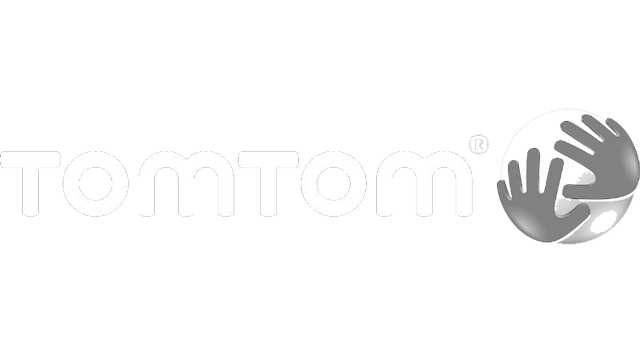We specialise in serving headquarters of global brands, helping them cut complexity costs in strategy execution across markets and fulfil their corporate role as scale economisers and advantage accelerators. Leverage our consulting expertise, technology solutions and remote talent resources to create organisational simplicity, scalability and efficiency in multi-market market operations.
Transforming global brand marketing, creative and eCommerce operations into a competitive advantage
 (EMEA) 47 markets
(EMEA) 47 markets
 (EMEA) 14 markets
(EMEA) 14 markets
 (WHQ)
(WHQ)
Global Brands, Global Brand Management and Global Brand Professionals
Expansion of the market footprint to global markets, gave rise to global brands - brands whose positioning, advertising strategy, personality, look, and feel are in most respects the same from one country to another. The common approach used by firms which sought to “go global” was to extend their domestic marketing strategies to international markets. As firms expanded their international activities, their standardised approach to branding led to international and eventually to what is now called global branding and global brands. A true brand represents a consistent set of associations and attributes that are recognizable to a relevant target audience of sufficient size and quality to sustain a viable, growing business. A global brand must do this on a macro scale, delivering a reliable core promise while remaining relevant to diverse audiences. Global brand as a marketing strategy is built around the idea of creation of a single global strategy that can be replicated in local markets. One story that can be literally and figuratively translated in multiple languages so that it will resonate and engage consumers around the globe.
A single global strategy that can be replicated in local markets.
Global brands give companies competitive advantages such as: 1) economies of scale in production and distribution 2) lower marketing costs 3) power and scope 4) consistency in brand image 5) ability to leverage ideas quickly and efficiently 6) uniformity of marketing practices. For example, it costs Coca-Cola much less to create a single global advertising campaign than it would to create separate campaigns for dozens of markets. A global company can reduce the risk in developing a global campaign by building on branding strategies that deliver(ed) successful results in domestic market. Building an existing brand progressively, market by market, is the safest and most cost-effective way to create a global brand.
Global brand management has evolved into a complex and ever changing discipline.
A brand that has been established has to continually maintain its brand image through brand management. Effective brand management increases brand awareness, measures and manages brand equity, drives initiatives that support a consistent brand message, identifies and accommodates new brand products, effectively positions the brand in the market, etc. Global brand management (GBM) is, as the name suggests, the analysis, planning, creation and organisation of your brand management at a global level. It requires coordination among countries and the headquarters so that a clear image of the company and its offerings develop – the big picture. Expert global brand management is tied to requirements: they concern the involved personnel, roles, responsibilities, processes, structures, the appointed information technology as well as the culture of the communications. Successful global brand management is a balancing act between local level aspirations and international strategic vision. In a world of globalisation, multinational companies and expanding online commercial and social interactions, global brand management has evolved into a complex and ever changing discipline.
Crucial element of global brand management and global brand function are people
Crucial element of global brand management and global brand function are people : global brand professionals, brand managers, directors, specialists. While people are important to any business and any corporate function, outsized importance of people in global brand management is tied to the fact brand development, management & execution know-how is mostly a tacit employee knowledge. This means that, unlike in other highly standardised functions such as supply chain or finance, where methodologies and execution steps are institutionalized within corporate processes and enforced through software solutions, global branding know-how exists only in the form of heuristics - tacit knowledge of selected individuals. Even though it is possible to capture personal knowledge - make it an organisational knowledge so it becomes a part of an organisational memory and a corporate asset, global brand function has shown to be especially impervious to standardisation and codification within a computer program, recipe or formula as a mean to be made explicit and easily transferable and shared.
Outsized importance of people in global brand management is tied to the fact that brand development, management & execution know-how is mostly a tacit employee knowledge
While tacitness of global branding know-how is nominally beneficial for global brand professionals, as it forms the foundation of their employee bargaining power - being sold as an expertise to their corporate employers, within matrix based global organisation it can also become both a career advancement and work-life balance inhibitor.
The tacitness of global branding know-how within matrix based global organisation can become both a career advancement and work-life balance inhibitor.
Matrix Structures, Complexity Costs and Late Nights At the Office.
Even though every organisation is structured in some way, and that structure is determined by the its objectives, for modern global organisations the Matrix model has become almost a standard. As problems and projects have become more complex, the inadequacy of the hierarchical and functional organisational structures became apparent. The matrix organisational structure provided solutions to these large scale project problems by allowing for impermanent project structures that co-existed with relatively permanent functional structures. The primary reason for adopting the matrix in large corporates can be pinpointed to the fact that functions and skills are fragmented throughout the organisational structure, while interdisciplinary projects required rapid infusions of technological know-how and efficient processing of very large amounts of information. In a matrix there are usually two chains of command, one along functional lines and the other along project, product, or client lines. Other chains of command such as geographic location are also possible and quite often, upon an already very complex organisational design, bring another layer of operational complexity.
The more elements you have, and the more different and interconnected they are, the more complex your organisation is
The pace of change in markets and companies’ efforts to stay in step have led to unprecedented increases in complexity—to the point that most organisations have truly become complex systems—ones with a very large number of interrelated parts. Complexity lives in the interactions. The more elements you have, and the more different and interconnected they are, the more complex your organisation is
Screenshot www.wilsonperumal.com
Same can be said for a particular function of a global organisation, especially that which is non-process driven, like a branding function. Complexity costs do not rise in proportion to the number of items in a company’s portfolio; they rise in proportion to the number of links between items as they interact with each other.
Screenshot www.wilsonperumal.com
Complexity costs rise in proportion to the number of links between elements as they interact with each other.
The complexity cost of global brand as a marketing strategy is nowhere more evident than in the matrix global organisation that follows a centralised, headquarter leading, global-to-local, (digital) brand campaign execution. This particular interplay between (1) global brand as a marketing strategy, (2) global-to-local execution, (3) global organisation with a (4) matrix organisational model, and (5) technology unsupported brand function global operating model, creates a 'perfect storm', exacerbating and bringing to surface negative externalities of underlying elements, that make the global branding campaign execution architecture infused with waste.

It is across these, deadline determined and intensive downstream and upstream campaign information and brand assets flows between headquarters and countries, and within individual organisational levels, where geometrically rising number of interactions mentioned above occur. It is here where the the matrix complexity takes its toll from an already 'weak', non-process driven and non- tailored technology supported, brand function's global operating model.
Highly paid professionals are trapped in email micro-management of tasks instead of value adding strategic brand building activations.
Results are hundreds of thousands wasted hours in misalignments between organisational levels (Global - EMEA - Country - Retailers) that take shape of continuous email chains of disconnected information, asset chases and late nights at office. Misalignments also often lead to last minute launches which create additional costs and overtime charges by agencies. Aside of waste of time, energy, process data (insights) and money, significant opportunity costs arise due to the fact that highly paid professionals are trapped in email micro-management of tasks instead of value adding strategic brand building activations.
The only way to reverse this is to look at the end-to-end global branding function, pinpoint misalignments, and implement scalable solutions that will connect all stakeholders in a streamlined execution free of complexity costs.
Global organisations that mostly are the owners and creators of global brands, in the process of 'going global' have became so complex that, their organisational structure itself creates complexity costs in term of time lost, loss of agility and speed.
Why Global Brand Professionals Spend Late Nights at the Office - Take Back Your Time
Global organisations that mostly are the owners and creators of global brands, in the process of 'going global' have became so complex that, their organisational structure itself creates complexity costs in term of time lost, loss of agility and speed. So, paradoxically, even though idea behind was cost saving, global brand management and global branding is (excessive) cost producing. Global brand campaign execution architecture stemming from notoriously non-process driven brand function nestled within a complex matrix organisation is often a source of colossal waste of time, money, data and missed opportunities.
In case of global brand function, global brand professionals - specialists, managers, directors, not only experience these costs every day, but also are the ones that incur these costs.
Complexity costs of global organisations are greater within functions that haven't been supported by tailored technology solutions and haven't been process-enabled. As global brand function is notoriously non-process driven and as global branding know-how is mostly tacit knowledge living in the heads of professionals and not an organisation institutionalized within process captured knowhow, the effects of complexity and costs are even higher. In case of global brand function, global brand professionals - specialists, managers, directors, not only experience these costs every day, but also are the ones that incur these costs.
When there are no processes and no process enabled global execution there is chaos

The way brand professionals incur these costs are days and days spent with flooded inboxes, assets chases and overtime - late nights spent at the office, instead of with their friends and families. Process secure cooperation. When there are no processes and no process enabled global execution there is chaos. Inbox chaos, unproductive meeting chaos and personal life chaos (suffering from the business life chaos). On the individual level, cost of complexity has been born by employees in the form of 'burnouts' which, hidden among lines of elaborately crafted job position descriptions, became not a matter of 'if' but 'when'.
The way brand professionals incur complexity costs are days and days spent with flooded inboxes, assets chases and overtime - late nights spent at the office, instead of with their friends and families.
SO DIGITAL provides global brands with both technology solutions and scalable talent resources that help global brands and their headquarters achieve economies of scale and scope and reduce organisational complexity costs in global branding. Our solutions create organisational simplicity and deliver speed & efficiency in execution across markets by standardising and codifying branding operations. We establish clear roles and responsibilities and translate it to platform interface in shape of user levels. We secure process implementation by defining chain of actions with defined goals to be completed by each user level within a predefined time frames and other user action dependencies.

Instead of being buried in endless chain of emails, brand professionals are able to perform all of their campaign execution related tasks in connection to other organisational levels within a simple and aesthetically pleasing interface. Platform is organised with a supply chain perspective and vertical and horizontal process visibility - meaning that all participants see the phases and action points that are time and role relevant with progress stage indicators.
Instead of being buried in endless chain of emails, brand professionals are able to perform all of their campaign execution related tasks in connection to other organisational levels within a simple and aesthetically pleasing interface.
Platform collects both process and output data per defined use - meaning that users can define the desired reporting on campaign success and build upon reports with 3rd party tools. Also that there’s an organisational campaign execution performance metric - how fast or how slow does an organisation roll-out a campaign globally.

Given that the physical (assets) and information flows are centralised and shared among participants each organisational level has a visibility of the progress / stage of the campaign which removes excess emailing on alignment issues. In this way, global brand organisations are able to reduce the complexity costs of global branding paradox, while global brand professionals are able to take back their scarcest resource : time. Spend it with friends and family instead in email chains and asset chases.
Global brand professionals are able to take back their scarcest resource : time. Spend it with friends and family instead in email chains and asset chases.
Execution, Not Strategy, Separates Leaders from Laggards. Leverage our platform solutions & services to create organisational simplicity and deliver speed and efficiency in execution across markets. Align inside to win outside.
Brand management is in itself complex, should your organisational execution increase or decrease this complexity? Simplify global brand operations - use a single point of contact and engagement for all phases of brand campaign execution. Make your day-to-day operations and workflows SO SIMPLE, SO EASY, SO FAST - SO DIGITAL.
Contact us today for a no-commitment walk through of SO DIGITAL platform solutions implemented for clients like Nike EMEA and Uber EMEA.
--------------------------------------------------------------------------------------------------------------
Read more on global branding execution challenges & complexity costs :
---------------------------------------------------------------------------------------------------------------
References :
Andrei Perumal, Stephen Wilson "Wilson Perumal & Company, Inc.", Multiple articles on www.wilsonperumal.com, Books : Growth in the Age of Complexity and Waging War on Complexity Costs (McGraw-Hill)
Steenkamp, Jan-Benedict. (2017). Global Brand Management. 10.1057/978-1-349-94994-6_7.
Anne-Wil Harzing "An Empirical Analysis and Extension of the Bartlett and Ghoshal Typology of Multinational Companies."
Dr. Michael Bloom and Michael Grant The Conference Board of Canada: "Valuing Headquarters (HQs): Analysis of the Role, Value and Benefit of HQs in Global Value Chains"






